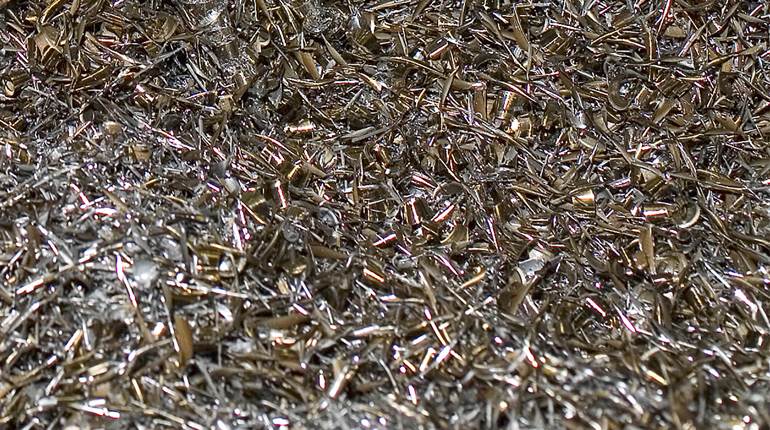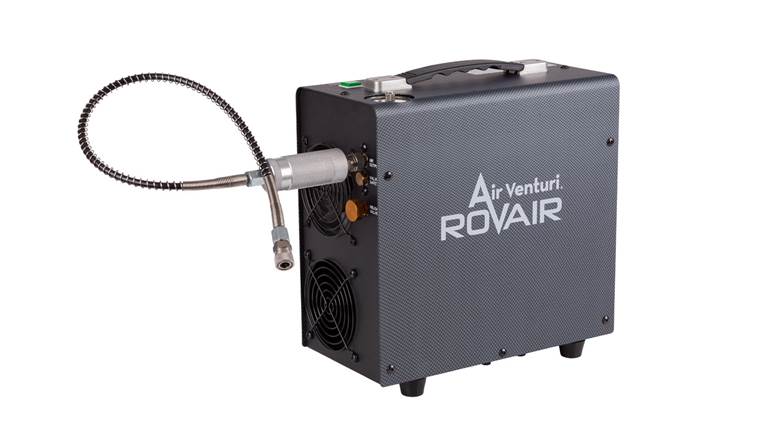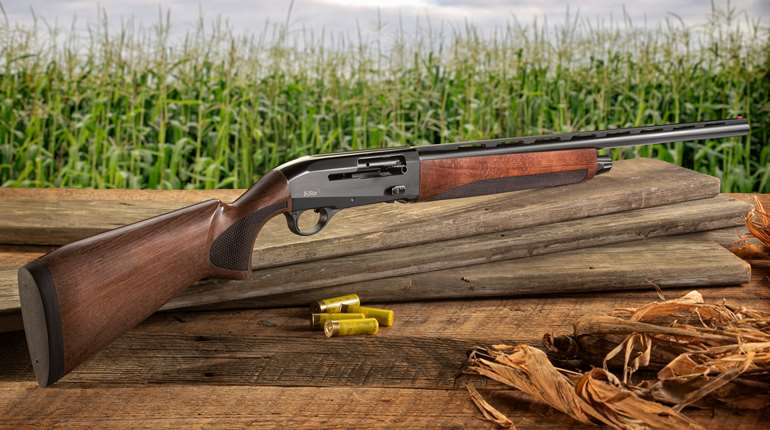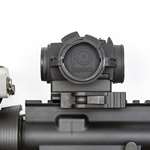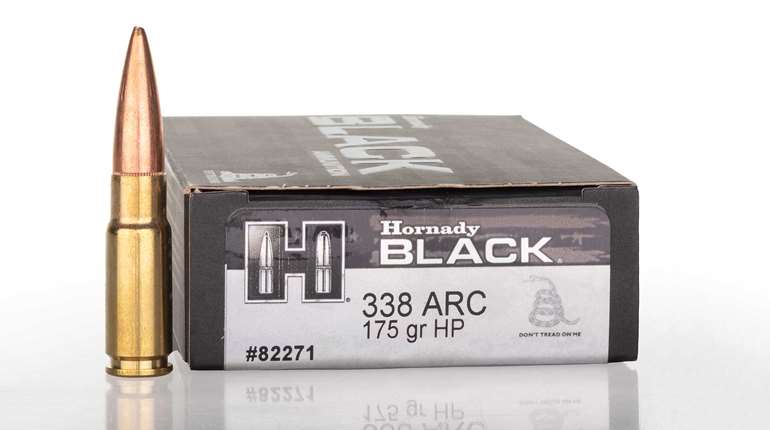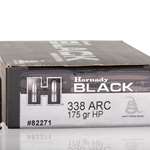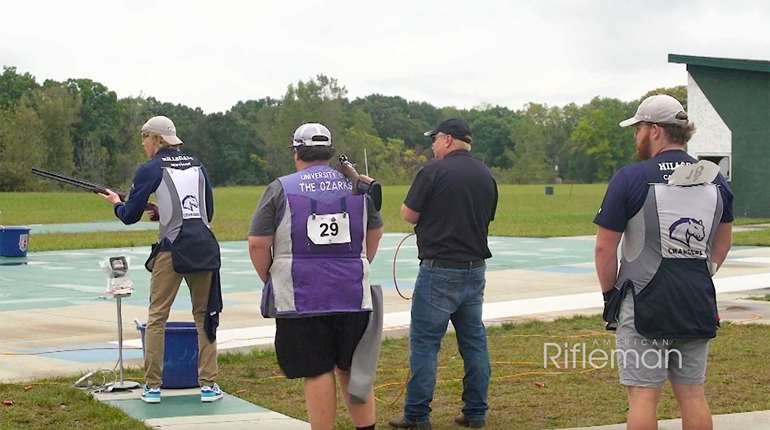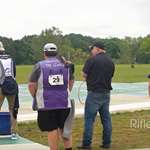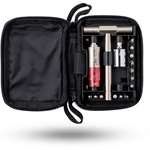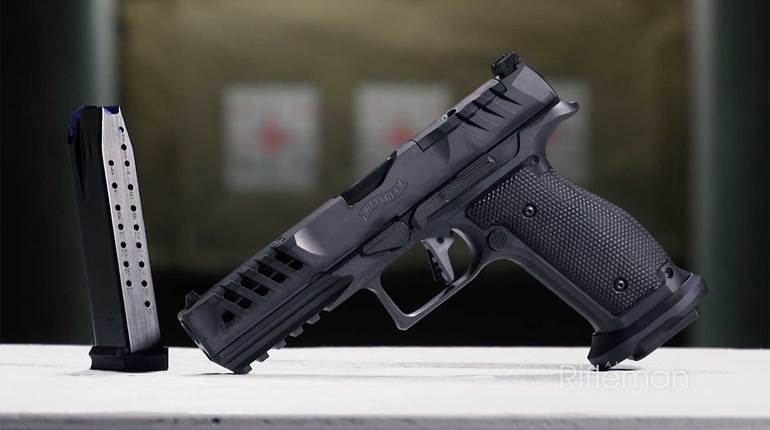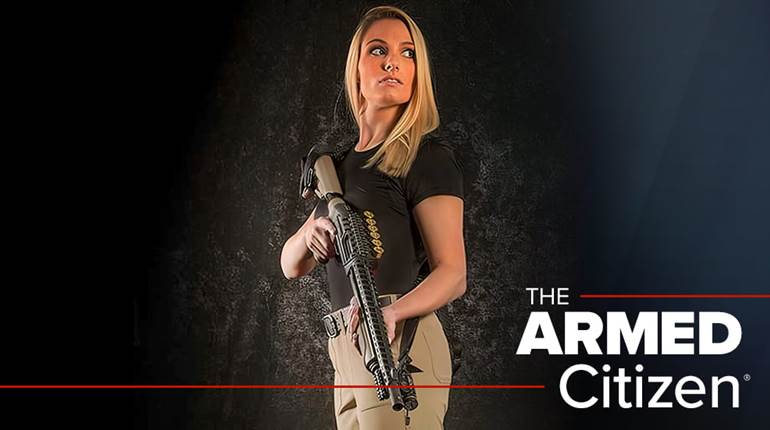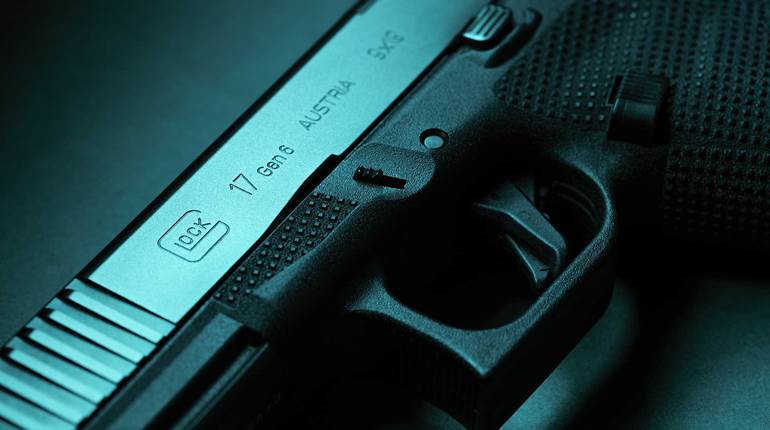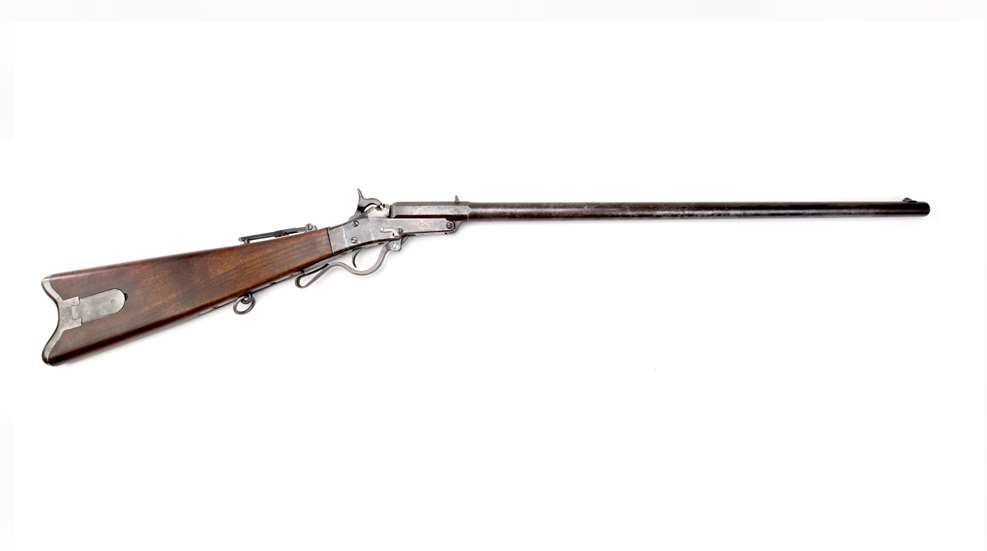
This article, authored by James E. Serven, originally appeared in the June 1976 issue of The American Rifleman. To subscribe to the monthly magazine, visit NRA’s membership page.
To many of today's arms collectors and historians, the name "Maynard" immediately brings to mind the efficient, if homely, little Civil War breechloading cavalry carbine of that name or the unique tape priming system used on certain U.S. military small arms introduced during the 1850s. Both of these developments stemmed from the inventive genius of Dr. Edward Maynard of Washington, D.C. Aside from his profession as a dentist, Dr. Maynard had a deep interest in things mechanical—especially in guns and their ignition systems. His first invention in this field, the Maynard tape primer lock, was patented Sept. 22, 1845. This device, designed to obviate use of the easily dropped copper percussion cap, was eventually used on some Jenks and Sharps arms, for the conversion of muzzleloading muskets, on U.S. Model 1855 rifles and pistols and on other arms, including pistols and shotguns made by the Massachusetts Arms Co. From these inventions, Maynard earned well over $75,000 in royalties.
The list of patents granted to Maynard is long and varied. Progressing from his tape primer ignition device, he entered the firearms field with a gun patent dated May 27, 1851, following this up with another patent in 1859. From these emerged a streamlined rifle and carbine with a tip-up barrel, a primer pocket with hinged cover in the breech, no forestock and a buttstock having a flat, fish-tail butt with patchbox on the right side. These arms are usually marked "Maynard Arms Co. Washington" and "Manufactured by Mass. Arms Co. Chicopee Falls."

In his Catalog of Firearms, L.D. Saterlee mentions a pre-1859 Maynard of which 400 were said to have been sold to the government in 1857 and later used by Confederate forces. If such exist, I have not found one illustrated in any of the standard books, nor have I seen a specimen so identified in any of the large collections.
Maynard's 1859 model, equipped with his patented tape primer device was made initially in cal. .50 and later in cals. .35 and .40. Their ignition and cartridges were novel. The tape primer was put up in a roll and consisted of two strips of varnished paper with deposits of fulminating mixture at spaced distances sealed between the strips. The tape was mechanically controlled and fed by action of the hammer to position a section of the fulminating mixture over a regular percussion nipple or cone where it could be struck by the falling hammer. Ordinary percussion caps might be used if preferred.
Tests of the 1859 Maynard conducted by the Navy in that year produced these results: of 250 shots fired at 500 yards, all hit the target, 80 percent of them within a 4 ft. square; at 1,300 yards, 14 of 43 shots struck a target 10 ft. by 30 ft. made of 1" thick boards. Twelve rounds were fired in one minute and 562 fired before cleaning. Two metallic cases remained in good condition after 100 rounds were fired from each.
The cartridges designed by Maynard consisted of a brass shell with a wide, thin head which had a small flash hole in the center. These cartridges were but one of the many cartridge types designed by him. A number of his designs are pictured and described in Herschel C. Logan's book Cartridges.
Maynard's early brass cartridges, although not self-primed, had a great advantage over both the paper and linen cartridges of the time, or loose powder and ball, in that they formed an excellent gas check. They could be reloaded many times and, since the priming was entirely separate, they were very safe to handle.
Finding few capable workmen or suitable manufacturing facilities in the Washington area, Maynard went to New England where workmen and plant facilities were in better supply. There he contracted with the Massachusetts Arms Co. of Chicopee Falls, Mass., to produce arms of his invention and cartridges to go with them.
The Massachusetts Arms Co., organized in 1850, was very capable and, among other arms, produced pistols on the Wesson & Leavitt and Adams patents. They had no difficulty in tooling up to manufacture Maynard rifles and carbines.
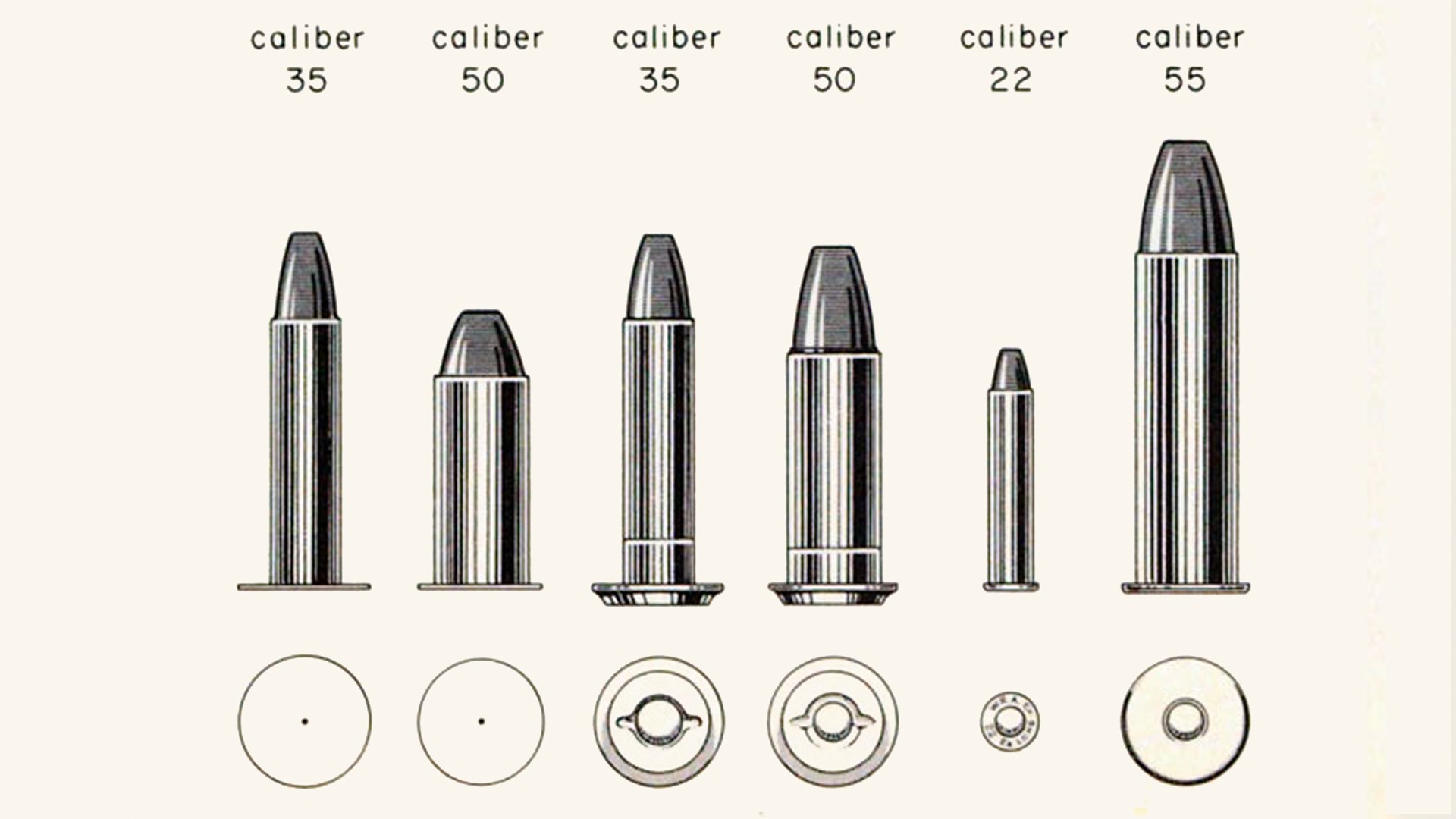
Demand for the 1859 Maynard model with its built-in priming device was relatively light and therefore production was not great, but the Civil War brought a big government order for Maynard carbines and started the wheels moving at a rapid pace. By the time the war was over, 20,202 carbines and 2,157,000 Maynard cartridges had been supplied to the Federal forces.
The carbine supplied the government differed from the Maynard 1859 model in that the tape primer mechanism was eliminated and straight percussion cap ignition was employed. The stock varied, too, in that it had a standard crescent shape buttplate without patchbox, and the elevating tang sight and the ring on the underside of the stock were also eliminated. These were plain, durable cal. .50 arms designed for hard service and generally known as the Model 1863.
Following the war, demand for firearms fell off drastically, but a sporting model of the Maynard was introduced to appeal to the civilian trade. Called the Model of 1865, it was furnished with longer barrels than the 20" carbine type and was made in cals. .35, .40 and .50. Barrels were easily interchangeable so that one breech and stock assembly could be used with separate barrels of different caliber. Sales were not spectacular.
Metallic cartridges with self-contained ignition had become popular, and the day of the separate-primed cartridge was ending. Edward Maynard and the Massachusetts Arms Co. realized they must do something about more modern cartridges. Early in February 1873, after considerable experimentation, Maynard had both the self-contained cartridge and the mechanism to fire it. This new cartridge had a very wide, thick base, beveled so that it resembled a saucer; it employed a special Berdan primer. The cartridge was wide enough so that it could be grasped with the fingers after being started from the chamber by the rather weak retractor patented some years earlier. Now the Maynard sporting rifle had ammunition that placed it in a better competitive position, and business began to pick up.
Here we have the Maynard Model 1873 rifles, some of which provided a new look in rifles of this make with optionals such as part-octagon barrels, checkered wood forearms, thicker pistol grip stocks with Schuetzen-style buttplates, and fancy sights. New calibers were added as manufacture progressed.
With the Model 1873 and the Model 1882 which was to follow, Maynard rifles reached the height of their quality and popularity. Sixteen rifle types were listed along with three shotgun types, in both the 1873 and 1882 models.
The Model 1882, like the Model 1873, was not made with a tight, closed breech. Space between the barrel and the breech was filled by the cartridge head. But there was a big difference in the cartridges used; in cartridges for the Model 1882 the thick, wide head was eliminated, and the cases were of a standard center-fire pattern typical of Winchester and Remington cartridges of that period. In addition to the .35, .40, .44 and .50 rifle calibers, and the .55 or .64 shotshell sizes, the Model 1882 could be had in .22 rimfire, and in cals. .22 extra long, .32, .38, .45 and .55 center-fire chamberings. A few other chamberings have been noted, possibly made on special order.
Available for installation on the Model 1873 rifles was the Hadley device that altered the centerfire action so that it would also fire rimfire cartridges. In the 1885 Maynard catalog, we find rimfire rifles listed "In Model 1873 with Rim Fire Attachment or Model 1882 without the attachment." The catalog stated that cal. .22 rimfire barrels, the .22 centerfire and all the larger caliber centerfire shells could be used in the Model 1882 breech without a change of firing pin.
This 1885 catalog contains the entire line of Maynard's sporting and target rifles, along with shotguns, and is representative of their best postwar production. Of the various styles offered, all could be had with either the Model 1873 or Model 1882 breeches. The difference in the two models lay primarily in the heads of the cartridges used. There was also a difference in the price of the cartridges, the Model 1873 type costing $0.15 apiece for cals. .35, .40 or .50, while the Model 1882 cartridges averaged $0.08 apiece.
The 16 Maynard rifle types listed included gallery, hunting and both midrange and long-range target rifles. All were fitted with round barrels, usually with a short octagon section at the breech. Rifles with a straight stock normally had a loop lever, while a curved, open lever was used on those with a pistol grip stock. The Maynard No. 1 and No. 2 were plain .22 rimfire rifles with 20" or 24" barrels for gallery or small game shooting. The No. 3 and No. 4 were cal. .32 hunting or target rifles having an option of 24" or 26" barrels. These were available in the Model 1873 (with attachment) for rimfire cartridges or in the Model 1882 for centerfire cartridges.
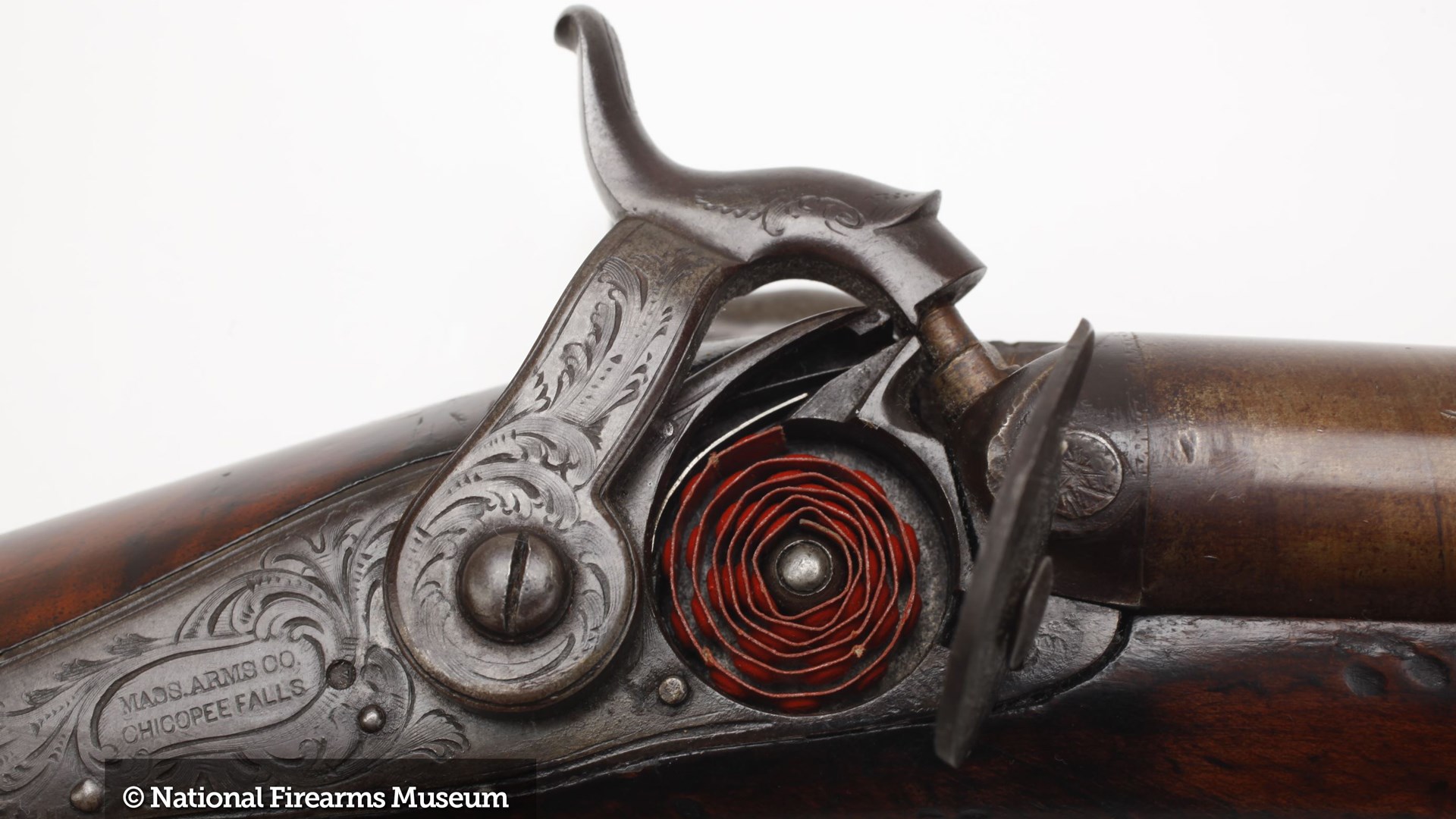
The rifles designated as No. 5 and No. 6 were plain hunter's or sporting models but of cal. .38. They were available with 26", 28" and 30" barrels. Next in line, the No. 7 Maynard, was actually of carbine size with a 20" barrel and weighing only 61/2 lbs. It was chambered for a .35-30 centerfire cartridge. This rifle cost $20, and for $3.50 one could obtain a bullet mold, loader, loading block, capper, cap picker, rod, brush, rag holder and screw driver. The No. 8 rifle was the same as No. 7 but with an elevating graduated peep sight.
There was nothing very unusual about the No. 9 Maynard, except that it was chambered for the .40-40 cartridge as well as the .35-30. It had a 26" barrel and target sights.
The first Maynard rifle to take on a dressed-up look was the No. 10 "Improved Mid-Range Target and Hunting Rifle." It was available in cals. .35-30, and .40-40 along with a .40-70 cartridge similar to the Ballard, and could be had with 28", 30" and 32" barrels. Extra fancy wood and checkering were available for the stock. The makers were proud of this rifle, and, as part of the listing stated, "These celebrated target and sporting arms with interchangeable rifle and shot barrels, for convenience, accuracy and penetration, have secured a reputation beyond that of any other breech-loading arms."
With their No. 11 rifle, the Maynard firm stepped up into the big bore class, offering guns chambered for the .44-60. .44-70, .44-100, .45-70 U.S. Gov't, .50 - 50. .50-70, .50-100 cartridges, and a big .55-100 round. The latter was strictly a hunter's rifle for large or dangerous game, and it could be had in 26", 28", 30" and 32" barrel lengths.
Proceeding to No. 12 and No. 13, we find little difference in them except for sights and finish. Both are mid-range target rifles of .40-60 or .40-70 chambering, with 28" to 32" barrels, and each weighed about 9 lbs. The oil-finished stocks were checkered at the wrist. In 1885, the No. 12 rifle cost $36 and the No. 13 listed at $45.

Maynard's No. 14 "Long Range Creedmoor Rifle" was in the big-time target shooting class. Like most Creedmoor rifles, it used a .44-100 cartridge. The barrel was 32" long, 2" shorter than most Creedmoor rifles of other makes. It had a checkered pistol-grip stock of fancy branch walnut, patent vernier rear sight and a wind gauge front sight with spirit level. The weight was just under the 10 lb. limit. Some very remarkable scores were made with a rifle of the same model in 1877 and 1878 by R. F. Sargeant and George W. Hadley.
The cream of the crop were the No. 15 and No. 16 rifles, both labeled as the "Maynard Improved Target Rifle." They were made with 26" to 32" barrels chambered for the .38-50, .40-60 or .40-70 cartridges using patched bullets. The No. 15 rifle had a straight stock and the No. 16 had a pistol-grip stock with high comb. Both rifles were offered with a checkered forearm and checkering on the wrist or grip. These were the first Maynard arms to be equipped with a wood forearm. Swiss-pattern plated buttplates were standard, but an interchangeable hunting buttplate was also furnished. Cals. .22, .32 and .35 barrels could be used with the No. 15 and No. 16 rifles when so ordered. These were fine off-hand match rifles, and there were many testimonials to their efficiency. Their prices in 1885 were $42 and $56, respectively.
The three shotguns concluding the Maynard line were made with barrels from 26" to 32" long. By 1885 they were chambered for the regular 20-ga. paper shell as well as Maynard cals. .55 and .64 brass shells. Prices ranged from $20 to $24.
A point emphasized by the Massachusetts Arms Co. was that all Maynard rifles and shotguns were made of steel or best Norway iron, no malleable iron being used. They also stressed the ease with which the barrels could be removed from the breech, thus providing portability and great versatility through use of the interchangeable barrels.
In 1886, the company published a little booklet with this title and subtitle: "THE MAYNARD RIFLE, Its history and development, with sketches of the noted American Riflemen who use this arm and their records."
This fascinating publication contains a brief history of the Maynard rifle and illustrates the shooting positions of famous marksmen of the day such as E. F. Richardson, 0. M. Jewell, C. W. Hinman, Col. W. E. Fitch, J. D. McIntyre, I. N. Dodge and others.
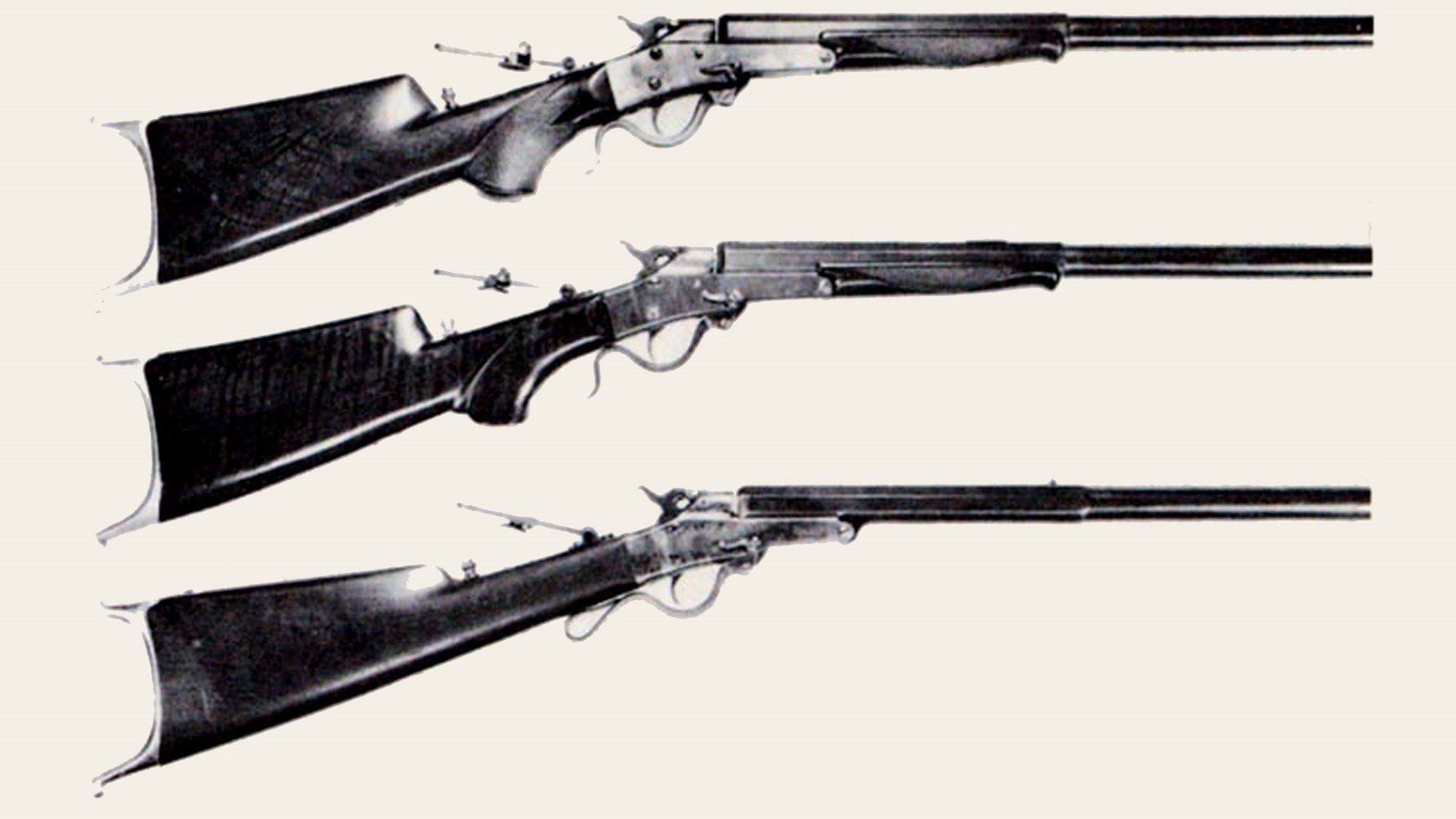
The testimonials of these gentlemen are quite impressive, but perhaps the one that carries the greatest weight was the strong endorsement of A. C. Gould, editor of Shooting and Fishing magazine and author of Modern American Rifles. Gould wrote from Boston in 1884: "I purchased a Maynard rifle some years ago, but with a desire which I presume all lovers of the rifle experience, to possess the most accurate weapon. I purchased nearly every variety of rifles made in this country, and some of English make. All I have ever owned I have shot at target, and most of them on game. I have endeavored to ascertain the true merits of each gun, and, after experimenting a number of years, I am now fully satisfied that the one that suits me best is the old reliable Maynard. In choosing a rifle, I first look for accuracy, and I am certain that none surpasses the Maynard. For convenience I have never seen its equal."
Despite glowing testimonials, Maynard rifles began to lose ground to other single-shot rifles with stronger breech mechanisms. The Massachusetts Arms Co. had its internal troubles, too. After the Civil War, a change in ownership had taken place, with T. W. Carter gaining control. The Lamb Knitting Machine Mfg. Co. in 1876 became owners of the water power and shops in which the Massachusetts Arms Co. made Maynard rifles. By the 1890s, manufacture of Maynard rifles came to an end. Repeating rifles and more powerful smokeless cartridges requiring stronger breeches began to cast their shadows over the beautifully-crafted single-shot blackpowder rifles. The Ballard was discontinued. The Sharps was gone. Other fine single-shot rifles were meeting the same fate. Some said too much handwork went into the Maynard. There were a number of reasons why the Massachusetts Arms Co. failed, and over 30 years of Maynard rifle production came to an end, but it was not that they had failed to put out a quality product.
The J. Stevens Arms & Tool Co., also of Chicopee Falls, acquired the Massachusetts Arms Co. assets and manufacturing rights to the Maynard rifles. As it turned out, they were content to bury the Maynard system in the pages of the past, giving only one flicker of recognition in naming a $3 boys rifle the "Stevens-Maynard Jr."
Dr. Edward Maynard died on May 4, 1891, at 78. Behind him, he left many evidences of his inventive genius. Honors and decorations had come to him not only from his own government but from the governments of Belgium, Prussia and Sweden. He was a distinguished figure in the annals of American armsmaking and in his profession.
—James E. Serven














